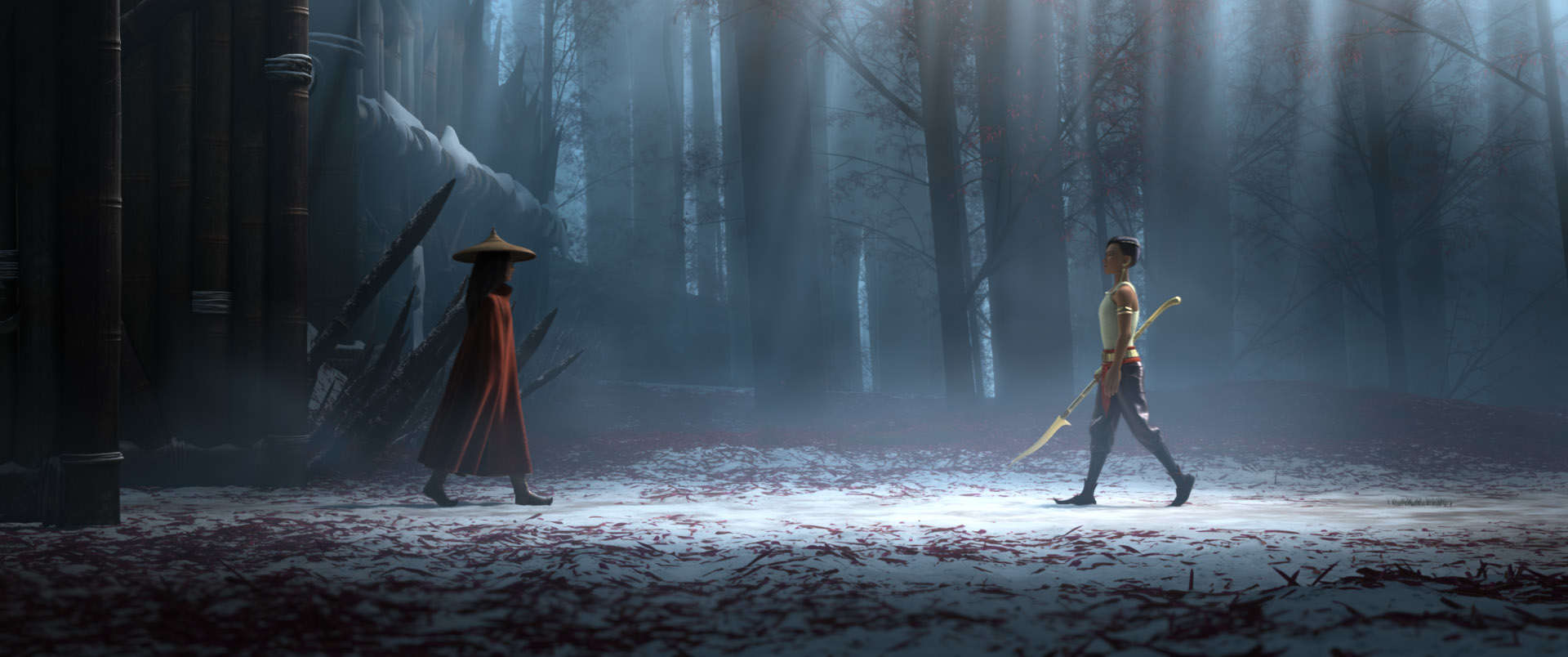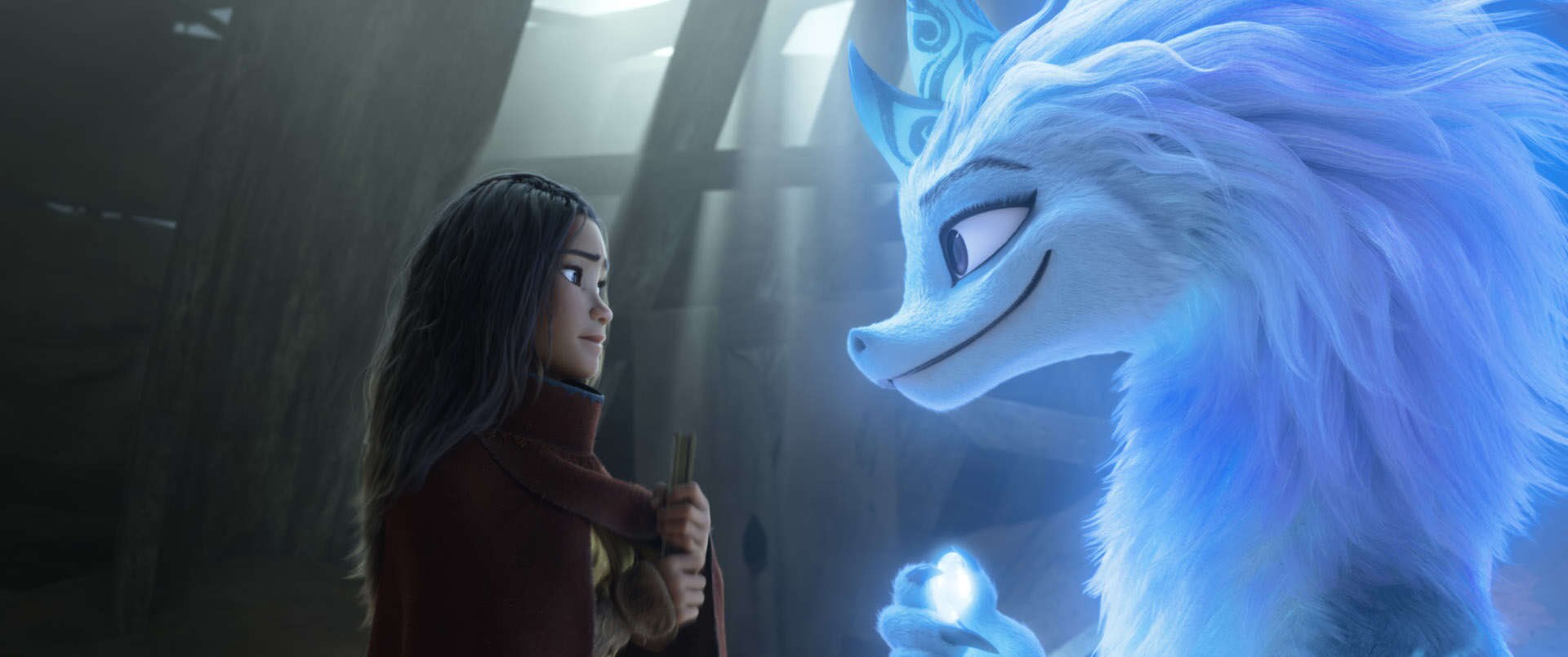Create a free profile to get unlimited access to exclusive videos, sweepstakes, and more!
Raya and the Last Dragon is Disney's most genuine, nuanced depiction of 'strong' women ever

There’s no one right way to be a woman. That sentiment is especially true in Disney's latest film, Raya and the Last Dragon. The long-awaited animated movie, featuring a stellar cast of A-list actors — including Kelly Marie Tran, Awkwafina, Gemma Chan, Daniel Dae Kim, Sandra Oh, Benedict Wong, and Alan Tudyk to name just a few — stars Tran as Raya, a warrior and adventurer out to restore life to the magical world of Kumandra.
**SPOILER WARNING: This story contains mild spoilers for Raya and the Last Dragon.**
“There were a lot of conversations in the beginning about wanting to make sure that this was a character that we had never seen before,” Tran told SYFY WIRE at a virtual press junket ahead of the film’s March 5 premiere. The goal, she explains, was partially to challenge what audiences’ understanding of a “princess” and a “hero” could be. She is not just one thing: Raya is a girl, a woman, a princess, a warrior, a hero, a daughter, a friend, and much more.
“This is a very different type of hero, a very different type of princess,” Tran assures.
Many of Disney's recent offerings have shown characters unhindered by characteristics such as gender, race, or sexuality. Young women can be rulers (Frozen, Tangled), adventurers (Moana, Tangled, Zootopia), and business owners (The Princess and the Frog). Often, though, these films feature few female characters, rarely play with set archetypes to give realistic depth, and almost always feature a love interest.
The same can’t be said for Raya and the Last Dragon’s female characters.
Raya isn’t the only different type of hero, either — or even the only different type of princess in the film. Whereas Raya, future ruler of the Kumandran land of Heart, is our hero, Chan’s Namaari, future ruler of the Fang land, is the villain. They weren’t always like that, though.
As children at the top of the film, Raya and Namaari strike up a friendship when they bond over their shared love of the now-extinct dragons that once soared over Kumandra.
“Who hasn’t had that teenage thing where you’re talking about that obscure band you both like and that’s enough, you’re friends forever off that?” producer Osnat Shurer told SYFY WIRE. The girls come from wildly different worlds and have wildly different parents, but that doesn’t mean they can’t find common ground.
Without getting into spoilers, Namaari and Raya’s relationship develops into adulthood, though it features a significantly different bite. A deep animosity grows between the women, and soon enough, they’re full-fledged enemies. Even with Namaari filling the “villain” role, though, there’s nothing one-note about her experiences, choices, or feelings.
“Namaari started out as much more your straight-forward villain,” co-writer Qui Nguyen explains. “But we were constantly being challenged: How do we make it deeper? How do we make Raya and Namaari’s relationship speak to the bigger story we’re trying to tell? That’s why we gave them this complex history. And it speaks to the other side of a lot of complex female relationships: someone you [once] shared a love with, a history with. They’re both raised to be these leaders, and now view each other as enemies.
“But they’re also kind of intrigued and drawn to each other,” she teases.
Another female character Raya is inevitably drawn to? Awkwafina’s Sisu, the titular “Lost Dragon.” While fighting to bring her broken world together, Raya accidentally summons Sisu back to life. As a self-titled dragon fangirl, Raya believes Sisu can save humanity like the dragon and her siblings did 500 years ago.
Sisu, though, is a bit different than what Raya expected. No noble, ultra-powerful creatures here. Sisu is a wise-cracker, the middle sibling of her dragon family, and, as she describes it, the kid who didn’t help with the school project but had no problem taking credit. Underneath the jokes and dragon powers, though, is a kind heart and a trust in and love for humanity that Raya has long been lacking.
While Raya, Namaari, and Sisu are not the only characters or even the only female characters in the film, they represent a spectrum. In their own ways, each of these characters is tough, driven, emotional, loyal, broken, and striving for connection. They are the heroes of their own stories and leaders in their own right. And their relationships are the heart of the story and the key to saving the world.
“The more we were able to dig into it, the more we were able to kind of look at each other and go, ‘Wow, there’s really not a lot of reference for this,’” Shurer says of these kinds of female friendships in film. “But we have strong friends and we come from long lines of strong women and we’re getting to see ourselves on the screen as well and that was a big part of it. Just look at it from your own life.”
“At no point in the movie is the fact that they are women held against them or seen as an obstacle that needed to be overcome,” Nguyen emphasizes. “They are free, fully fleshed-out characters. They have their own journeys, their own personal arcs, their own missions to accomplish, and it has nothing to do with the fact that they are women. Our characters are female. That’s part of their identity, but it is not their soul, defining trait.”
Raya and the Last Dragon opens in theaters and on Disney+ with premier access this Friday, March 5.




























